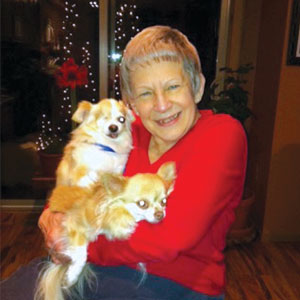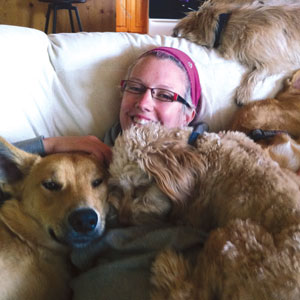- Dog CareDog LifeCommunity
- Photo Contest
Photo Contest- Giveaways
A Perfect Match
100–year-old California resident Johanna Carrington has adopted the perfect companion: an 11-year-old Chihuahua mix named Gucci.
Carrington was more than ready for some canine companionship—her home was feeling much too quiet after the passing of her previous dog, Rocky. Carrington told her daughter, Debbie Carrington, that she hoped to adopt another dog but was worried she wouldn’t be approved due to her age.
Photo Debbie CarringtonLuckily, Carrington’s neighbour volunteers for Muttville Senior Dog Rescue in San Francisco, and she thought they might be able to help. The organization felt they had the perfect match in Gucci. The sweet senior Chihuahua mix, rescued from a hoarding situation with 22 other dogs, was ready for the love and attention that comes with being an only dog. The organization arranged a meet-up, and it was an instant love match.
“He came to the house like he’d been here before,” Carrington told TODAY. “It was remarkable. He saw me sitting on my chair, jumped up on me, and sat on my lap. He made himself very, very comfortable. He was just our baby right away.”
Photo Debbie CarringtonThe small dog likes to fetch—he now has “oodles” of toys—and Carrington massages him while they watch TV together.
Gucci’s presence has proven transformative. “After she lost her other dog, it was kind of sad here,” says Debbie Carrington. “It was quiet and sad, and then Gucci brought joy into the house. Laughing about him running around and doing funny things, and then also him sleeping on her lap with her while she’s in her recliner or sleeping in her bed, it’s just making her very happy.”
Having a strong support system can help seniors adopt pets. As part of the adoption approval process, Johanna Carrington’s caregiver, Eddie Martinez, agreed to help with Gucci’s care and take him on daily walks.
Carrington is looking forward to doing something fun with Gucci to celebrate her 101st birthday this December. Though she credits her longevity to a healthy lifestyle, she says she definitely feels that having a pet is one of the secrets to a long, happy life.
Photo Debbie CarringtonStudies prove she’s right, showing pet ownership to improve the mental health of older adults by providing companionship, reducing loneliness, increasing socialization, and giving a sense of purpose. Pets also contribute to healthy aging by reducing stress, encouraging physical activity, and even helping people cope with pain.
Alice Ensor, adoptions coordinator at Muttville Senior Dog Rescue, says seniors adopting senior dogs is a win for everyone involved. To help facilitate these pairings, Muttville offers a Seniors for Seniors program. If a senior adopts a dog but can no longer care for them, Muttville pledges to take the dog back. They also stay in contact in case the adopter needs assistance, such as temporary fostering.
“We want them to still have that time together and experience the full joy of their senior years together,” says Ensor. “Life is better with a dog, whether you’re young or old.”
The First Step
Family, friends, and neighbours can assist seniors in adopting pets by helping them with technology, notes Esnor. Many organizations use social media to post adoptable pets; meet-and-greets and home inspections are frequently conducted via FaceTime or Zoom, which can be difficult for seniors to navigate without assistance.
Seniors For Seniors
Muttville’s Seniors for Seniors program accounts for approximately 32 percent of their adoptions each year. The team works to find the perfect match for older adopters. Dogs with lower exercise needs and of smaller size (such as a dog who can be lifted but isn’t so small as to potentially cause a fall by getting underfoot), or a dog who is comfortable around walkers or wheelchairs are some of the things they look for.
This article originally appeared in the award-winning Modern Dog magazine. Subscribe today!
An Education in Love
In the world of animal welfare, it is heart that makes a family. An abandoned mother dog has been “schooled” in this beautiful lesson by one special Helen Woodward Animal Center foster volunteer named Ami Askins and her classroom of 3rd and 4th Graders at Los Penasquitos Elementary School. Without a family and late into her pregnancy, the shepherd-blend named Chloe received an emergency flight to the Center in search of safety and a place to give birth. Now Chloe and her beautiful litter of twelve have a place to rest while nursing, along with a true education in love.
The financial strain caused by the pandemic has made its mark on people across the world. Late April, in southern New Mexico, a family in financial trouble moved from their home and tragically, abandoned Chloe, left gated in the backyard. The situation would have been dire if neighbors had not become aware of the pregnant dog and reached out to a rescue group to help.
Realizing that Chloe was only days from birth, the rescue group contacted Pilots for Paws who scheduled her for a flight to Helen Woodward Animal Center. On April 30th, Chloe waddled on board, nearly full-term in her pregnancy. Upon landing, the mother dog received her medical check and was whisked into the home of Ami Askins, a devoted foster volunteer who teaches social studies and science at Los Penasquitos Elementary.
Knowing her students would love Chloe, Askins shared her story and began to cover animal adaptions and traits in her class curriculum. Days later, Chloe gave birth to an enormous litter of twelve.
“The students were ecstatic,” said Askins. “They loved hearing about Chloe’s puppies.”
Askins began to integrate updates on the newborns’ progress into daily lessons, holding regular conversations about the different stages of development and sharing insights about the foster experience that students are normally not exposed to.
“We loved hearing the updates from Ami,” stated Helen Woodward Animal Center Foster Program Lead Hannah Wilson. “There was something so touching about the fact that Chloe had been left without a family and now, had a loving foster and a whole classroom of children who wanted to know how she was doing every single day.”
When Askins reported that the children were hoping that they could name the puppies, Wilson agreed.
“They were so invested in their health and survival and they seemed like the perfect ones to pick the names,” explained Wilson.
Chloe and her puppies (Brownie, CC, Clay, Coco, Cookie, Duke, Goldie, Lola, Lucky, Moonlight, Muffin, and Sunny) are healthy and almost ready to search for their final forever homes. In the meantime, a classroom of love has provided a good education on the meaning of family.
Chloe’s puppies will be available for adoption in the next two weeks. Chloe will go available for adoption a few weeks after her pups. For more information on Helen Woodward Animal Center or to adopt, go online at www.animalcenter.org or call (858) 756-4117 x 313.
Video of the Day: World’s First Airborne Dog Rescue Team
via Uzoo
Best Friend Animal Society Helps Declare Inde-Pet-Dence This 4th
Food. Fireworks. Fun. That’s the scenario for millions of people that celebrate US Independence Day on July 4th, one of the year’s liveliest holidays.
Unfortunately, for pets that get frightened during the festivities, it can be anything but a celebration. Driven by a fearful reaction to fireworks and other loud sights and sounds, dogs and cats that flee from their homes often end up in municipal animal shelters.
“Nationwide, July 4th weekend is the busiest shelter intake time of the year. So, while many of us are celebrating a holiday, the shelters will be flooded with pets, many of which will never find their way home,” said Gregory Castle, chief executive officer of Best Friends Animal Society. “In order to avoid this heartbreaking scenario, we encourage owners to make the holiday as safe as possible for their pets.”
Best Friends Animal Society offers the following tips to help keep your pets safe over the holiday weekend:
• Bring all pets indoors whenever neighborhood fireworks displays are likely. Secure dogs in a room and play music or turn on the television to drown out the frightening sounds.
• Keep pets away from lit fireworks at all times, including your own backyard, as some will chase after the bright moving objects and are at risk to be burned or blinded in the process.
• Ensure that pets are wearing current identification tags.
• For the ultimate identification protection, all pets should be microchipped so that they can scanned at an animal shelter or veterinary office.
• If your pet does go missing over the holiday, check with local animal shelters immediately. Go to the shelter in person to identify your pet, rather than calling or emailing the shelter, as staff may not be able to respond in a timely enough fashion to ensure your pet’s safety.To maximize lifesaving efforts in July, Best Friends Animal Society is hosting a national “Celebrate Freedom” adoption campaign at its facilities in LA and Salt Lake City, as well as through its more than 1,100 No More Homeless Pets Network Partners across the country. For the month of July, adoption fees will start at just $25. (For more information about participating organizations near you, visit bestfriends.org/Adopt-a-Pet/National-Adoption-Specials).
“There is no better time than now if you’re in the market to adopt a dog or cat. You’ll be saving two lives with every adoption, the one you take home and the one that now has space at the shelter,” Castle said.
Best Friends is also offering special hours and fees on July 4th weekend at its adoption centers, where all pets originate from municipal shelters:
• Best Friends Pet Adoption & Spay/Neuter Center in Mission Hills, CA, which transfers dogs and cats from Los Angeles Animal Services to its no-kill facility, is hosting a special 24/7 #Freedom100 adoption marathon. From noon on Friday, July 3 through Monday, July 6 at 8 p.m., the center will offer $10 fees for the first 100 adopters.
• The Best Friends’ NKLA Pet Adoption Center in Los Angeles, CA will offer $10 adoptions for all cats and $25 on select dogs during its daily business hours of noon to 8 p.m. on July 3, 4 and 5.
• The Best Friends Sugar House Adoption Center in Salt Lake City, UT will be open during on July 4th from 11 a.m. to 4 p.m. to accommodate holiday adopters, with $25 adoptions on pets six months or older to the first 100 adopters.Each pet at the Best Friends centers is spayed or neutered, microchipped, vaccinated and ready to go home immediately
“Adoption isn’t just the most humane option when adding a four-legged member to your family, it’s convenient and cost-effective, too,” Castle said. “Our hope is that Americans across the country will band together to declare this 4th as Inde-Pet-Dence Day for shelter pets in their community.”
Video of the Day: A New Life for Zoey
5 Totally Awesome Ways You Can Help Dogs Or Volunteer With Your Own
#1 Take photos to showcase adoptable dogs
Amanda Griener of Petawawa, Ontario, works as a professional engineer for an Ontario utility. On the weekends, though, she grabs her camera and heads to an OSPCA branch to take fabulous photos of the dogs awaiting adoption, making sure their personalities shine through.
Amanda had been taking photos at weddings and was invited to photograph a special event with the OSPCA. Afterward, she offered her services and now visits the shelter weekly for a photo shoot. To volunteer, Amanda completed a training session on OSPCA values and operating principles. Her weekly visits are two hours long, taking dogs one at a time from their kennels into a large fenced area for off-leash play. Each session lasts about 15 minutes, and Amanda considers it selfish time, as she loves being around the dogs. “It’s a nice escape for me to go out there for an hour or two.”
Although she usually sees a dog only once, there are exceptions, like Bulldozer, a Bulldog pup who jumped out of a pickup truck and required significant surgery. To raise money, Amanda did a larger photo shoot, including before and after shots, and Bulldozer ultimately found his loving forever home.
“You have to be patient and work with them on their terms,” she says. “I collect the dog, get its name, and learn about them, looking for that unique thing I am trying to capture.”
It’s important that she get it right, as the photo is the dog’s opportunity to make a good first impression on adoption web sites or Facebook. “A good quality photo showcases the dog. It’s a great start to find their forever home,” she says.
#2 Lift spirits. Take your dog to visit care homes.
Kerri Andstein hadn’t done much volunteer work since she was a kid in school. Now, the self employed cake artist finds her weekly visit to a care facility in South Surrey, BC, have become an integral part of her life.
Kerri had read Facebook posts about a friend who visited a seniors’ facility with her dog and those stories melted her heart. Kerri researched different organizations and found BC Pets and Friends, “an amazing group.” She applied, and took her own Golden Retriever, four-year-old Roxy, in for an assessment as a therapy dog.
“I was nervous—Golden Retrievers are high energy dogs, but [BC Pets and Friends] explained the testing. They’re not looking to fail people. It put me at ease that I’m not going in thinking my dog isn’t appropriate.”
After completing paperwork, Roxy got a hands-on screening test involving loud or surprising noises, distractions, and touching her paws, ears, and tails for any sensitivities. Roxy passed, so Kerri then attended a four-hour orientation, got a police record check, and was matched to a facility. Kerri visits weekly and loves it; not just the amazing feeling of giving back to the community but also the opportunity to spend more time with Roxy who adores being petted.
“I didn’t realize how much I would enjoy it,” she says. Residents can pat the dog, ask for tricks, or get a cuddle. “Certain residents have an immediate connection. It brightens their day. I can tell it’s the best part of the day for them.”
It’s also a bit of routine—in a good way. It gives residents a reason to keep track of which day it is.
One resident was looking for Kerri and was anxious that she may have missed Roxy’s visit, which is announced on the residents’ bulletin board. Kerri explained that she and Roxy come off the elevator precisely at 10 a.m. on Mondays, and their first visit is the TV room.
“That was six weeks ago. Every time now, the elevator opens and that lady is right there waiting,” says Kerri. “She wants to be first to see Roxy.”
Kerri says it would be easy for people to put up barriers about committing the time it takes to volunteer visiting residential or healthcare facilities, but it’s not a chore. “It’s part of the week I look forward to most. I shut off my phone and am very present with my dog. I put her bandana on and she knows she’s going to work. She’s ready. I find the time—it is that rewarding.”
#3 Start your own rescue group
For Dr. Laurie Hirt, starting her own small scale rescue organization was pretty much all in a day’s work. The practicing veterinarian owns a clinic in Clyde, Ohio and began by taking in dogs that needed a home, and then trying to place them.
“I started rescuing the day I started practice because people got rid of dogs for such silly reasons,” she says. Since 1982, she has been taking dogs, often special needs, as she has the space and the ability to care for their medical needs. In 2009, she officially opened Another Chance Sanctuary, a 501 C nonprofit, out of her home.
Between 28 and 45 dogs live with her at any given time. She places the ones she can, and attends adoption events to give the dogs a better chance of being seen. The other dogs, like the ones with diabetes or epilepsy, or the senior dogs, live with her because she is comfortable living with them and loves their company. “I like to help the ones who need me.”
Nonprofit status allows her to fundraise to help with expenses, while volunteers come twice a day to assist with feeding and cleaning. Her large property provides plenty of opportunity for exercise for all the dogs, including Snoogles, a Shih Tzu with a back injury who gets around, when in his cart, just like any other dog.
“My heart goes out to those animals. They need a place to go, a place to stay. I can’t save everyone and I don’t always…I have to say no sometimes.”
She didn’t say no to Hannah, though, the Golden Doodle born with neurological deficits. Hannah has little control over her rear legs or her ability to go to the bathroom.
“She’s eight. She’s been with me a long time. I get to know the dogs are happy dogs. It makes me happy that I give them a life. I look at Hannah and it would have been a shame if she was put down early on. She’s a fun dog. It’s fun to see her in her cart. She grins at you,” says Laurie, adding that the dogs she rescues “all get a life.”
#4 Take in a dog temporarily
Lindsay Zomers began fostering dogs about five years ago, when she adopted her own pup and became friends with the woman running the rescue, Dhana Metta Rescue Society in Vancouver. She was hooked right from the first dog. “I get to see their progress,” she says. “Fostering gives the dog more one-on-one care.”
She now volunteers with Edmonton, AB’s Animal Rescue and Outreach Society.
Since she began fostering, Lindsay has taken in 50 to 60 dogs and currently has five foster dogs in her care, as well as her own pack. To help dogs that perhaps have a past to overcome, she has even gone to school to become a dog trainer, something she does in addition to working in an office.
“I think, once I did dog training school, I wanted to make sure [the dogs] got the best possible care. I generally take fearful dogs because I have the experience and ability. More fearful dogs speak to me.” Foster dogs live with the family like a family pet.
Foster parents can also be expected to take the dog to adoption events or other appointments and to address any issues that arise. Dogs stay anywhere from a few weeks to a year but for Lindsay, they average three months. The dogs get the love and affection of a real home as well as, in Lindsay’s case, exposure to other dogs; the fosterer gets the opportunity to assess the dog’s temperament and personality while in a home environment (shelters are often stressful for a dog who might react by barking and growling) and the undeniably enormous rewards of having contributed to saving that dog’s life. Plus, foster parents often get to see the dog go into a forever home, and “it’s nice to see you’ve completed someone’s family.”
But fighting the desire to keep a foster dog requires some preparation. “The biggest way to prepare yourself is that if you keep an extra dog, there’s one less dog you can save.”
#5 Road trip! Transport dogs from high kill shelters to rescue groups
As president of a furniture company, Mark Gilbert often volunteered or donated to different causes, but three years ago he became heavily involved with dog rescue, but behind the scenes. Mark transports dogs from high kill shelters to other rescue groups throughout California, Oregon, and Washington, all from his home base in Eugene, OR.
The work involved starts before a dog ever gets inside his Mercedes Sprinter van, which is large enough for him to walk through when loaded with kennels. It is necessary, he says, to have access for safety and clean-up. “It takes about five hours to set up the van,” he says. He knows how many and what size dogs he will be retrieving, so he sterilizes kennels and starts securing them in the vehicle. He repeats this routine three times a month.
“I can get 60 dogs in there, three in a kennel if they’re small dogs. We match dogs up who have previously been kenneled. If they’re scared, they ride in the passenger’s side with me.”
He volunteers with START (Shelter Transport Animal Rescue Team) which has moved more than 5,000 dogs so far. START provides his pickup and delivery destinations (there could be as many as six). He prepares for doggy spills and sickness by rolling up towels and sani-wipes between cages. He also has fans to help circulate the air conditioning from the front to the back of the van.
“I leave around four or five in the morning. I work with the dogs [when arriving at his pickup point] to get them ready,” he says, helping with paper work or veterinarian visits. He sleeps overnight and is up again early “to beat the flies and high temperature in California. It takes an hour to load the van and all are delivered by that evening.”
He was asked, when delivering furniture, if he could move a few dogs, and the first year he moved 60. The second year was 200 and he now does a thousand or more each year. “You stand in front of them looking at them and do whatever you can to help.” He says it isn’t the travel that motivates him to help (it’s the same road over and over again). And being a volunteer driver means you need to be willing to do things without a pat on the back. But he knows exactly what the dogs get out of his efforts. “They get life. You save the ones you can.”
Don’t Miss Cause For Paws Tonight
Being that it’s Thanksgiving today, a time that we reflect on and give thanks for life’s blessings, I’d like to personally give thanks to Michael Levitt, Jane Lynch, and Hilary Swank who have partnered with FOX to produce Cause for Paws, a two-hour groundbreaking dog rescue special that will air tonight (Thanksgiving at 8/7c on FOX). A huge part of Modern Dog’s mandate is to bring attention to the plight of abandoned/homeless dogs and facilitate and promote their adoption/rescue so to have a prime-time show dedicated to this cause is right up our alley! It’s my sincere wish that this prime-time special will raise awareness about the millions of perfectly wonderful dogs in shelters who are awaiting their forever homes. I’m also delighted that there will be a spotlight shone on the shelter workers who tirelessly give of themselves to help animals in need.
The special will be both uplifting and entertaining, featuring:
• inspiring and funny stories of rescue dogs,
• the best viral videos starring rescue pups,
• games featuring dogs and celebrity participants, and
• stories honouring people who dedicate their lives to rescuing animals in need.There’s a whole star-studded cast of celebrities participating including:
Paula Abdul, David Arquette, Wayne Brady, Kristin Chenoweth, Kaley Cuoco, Whitney Cummings, Miley Cyrus, Gavin DeGraw, Josh Duhamel, Fergie, Max Greenfield, Kathy Griffin, Julianne Hough, Randy Jackson, Scarlett Johansson, Kesha, Miranda Lambert, Queen Latifah, Wendie Malick, MASTERCHEF JUNIOR contestants Sean, Mitchell and Natalie, Cesar Millan, Olivia Munn, Olivia Newton-John, Jerry O’Connell, Kelly Osbourne, Sharon Osbourne, P!nk, Amber Riley, Rebecca Romijn, Emmy Rossum, Roselyn Sanchez, Channing Tatum, Jenna Dewan Tatum and Betty White.Tune in Thanksgiving Night, Thursday, Nov. 27 at 8/7c on FOX!
For more info go to:
OFFICIAL SHOW FACEBOOK: https://www.facebook.com/CauseForPawsFOX
OFFICIAL SHOW TWITTER: @CauseforPawsFOX
JOIN THE DISCUSSION: #foxcauseforpawsHappy Thanksgiving everyone!
Connie
Here are some of my photos of the Red Carpet Taping of the show:
Michael Levitt gets—or gives—a kiss!
Jane LynchHilary Swank
Jerry O'Connell and Rebecca Romijin
Kathy Griffin
Kristin Chenoweth
Max Greenfield
Dog for Dog's Rocky Kanaka with publicist Vivian Mayer (left) and Modern Dog's Jennifer Nosek (right)
Paula Abdul
Dog for Dog's Rocky Kanaka with Kelly Hannaford (center) and Brie Strohmeyer (left).
Wendie Malick
How to Get Started Fostering Dogs
I’ve adopted many dogs in my lifetime, dogs from shelters, from rescue groups, and once even from an acquaintance when it was evident that the puppy was failing to thrive and would likely die. The dogs have been big, small, and even toy. Their ages have ranged from newborn pup to senior dog. All had one thing in common though—I knew they were forever mine from the moment I wrapped my arms around them. But for the fosterers of rescue dogs, their loving arms and warm hearths are not forever, but just for now and because of that, many more dogs can be saved.
There’s no doubt that adopting dogs into permanent homes is the ultimate goal for shelters and rescue groups, but fostering is another, equally important step in the adoption process. Dog fosterers are those often unsung, frequently short-term volunteers who provide love and food and shelter and compassion—in short, a safe stop on what has been, in many cases, a tumultuous journey.
Without dog fosterers—without that vital step—many adoptions would never be possible. No-kill shelters are the exception, not the rule, and many, many dogs are euthanized simply because there is nowhere to house them; fostering offers a reprieve. Furthermore, many dogs—those that are too stressed by the shelter environment or those in need of recuperative care or training—don’t fare well in a shelter environment, making it difficult to appeal to would-be adopters.
The latter was the case with Yukon, an 11-month-old red and white Siberian Husky that had already been returned to the shelter three times. Even the most well-meaning adoptive family proved no match for Yukon’s very high energy level and demands, which is why he was surrendered in the first place.
“Someone saw him—a neighbour—and convinced the owner to surrender the dog. He was howling and looked stressed,” says Shannon Briggs, president of the Vancouver Island Dogs Rescue Society and foster mom. “He had limited placement options.”
So Briggs herself fostered him as he fit in with her own pack, which included two Huskies, and began addressing his serious separation anxiety and boundary issues. All vetting was done (shots, neutering, and tattoo) and she started him on basic obedience training.
Then, fate smiled on Yukon; a couple saw his photo on the Society’s Facebook page, fell in love, and adopted him. This is yet another upside for dogs in foster care; once out of the shelter and into a real, though temporary, home, they have a greater chance of being seen by potential adopters.
“They were Husky owners and lived a block away,” Briggs says, which meant the home visit and introduction to his new pack were a breeze to arrange. “I still see him. It’s awesome.”
The commitment, she says, is to foster until the dog is adopted, providing love and training with the goal of assisting the dog in finding and keeping a forever home.
Which isn’t to say she found it easy to give up Yukon or any other foster dog, for that matter. It’s not so much sad as bittersweet, she says. One realization keeps her going: “I see the next dog. I see all the dogs we say no to…if I keep one, I can’t foster anymore.”
Robin Kennedy feels the same way. She volunteers with Southside Animal Shelter in Indianapolis, Indiana, which places about 500 animals each year, taking 95 percent of their animals from municipal shelters, which are full or unable to find adoptive homes due to an animal’s disposition.
She often hears people say they wish they could take all the dogs in and save them. “But they can’t, so [they should] just take one and give it a chance,” she says. “Every dog fostered saves two lives: one that’s in the home and the space in the shelter where another one can stay so it doesn’t die.”
She has fostered 106 animals (a third of which were dogs) and is always trying to find others to foster as well. The special needs ones, though, she takes on herself. Like Penny, an eight-year-old Pomeranian surrendered to a veterinarian to be euthanized for medical issues. She hads an enlarged heart, collapsing trachea, and two hernias. “She was so sweet,” Kennedy explains, “that the vet couldn’t do it so they called the organization and said, ‘Will you take Penny?’”
Penny stayed with Robin for a year before being adopted by a retired dentist. Robin described Penny’s medical conditions and medication requirements but the man said not to worry, he takes heart medications and has had a hernia himself. Penny spent the entirety of his initial visit in his lap.
“I do fall in love but I also know if you don’t let go, you can’t help another,” says Kennedy. “Before Penny left, as I was giving him the spiel, there were tears in my eyes but I knew he was the best home for her.”
She has five more dogs in her care right now and she hopes they will all move on at some point.
“I give them the best start I can. They come in scared, sick, have medical issues, and need a place to get better. When they’re in the best health, I give them the best start for the rest of their lives. I don’t know if I will ever own a dog again.”
For others, it was offering a forever home that introduced them to fostering.
Craig Smith and his wife Sara live in Invermere, BC. They adopted two pups from a foster home working with a rescue group. Those dogs, Julius Ceasar and Foxy Brown, now two-and-a-half, are mixed breeds that had been tossed in a dumpster.
“I think they are Lab-Shepherd-Husky cross. They look like dingoes,” he says, noting they are “such amazing, well-mannered dogs. They are like the Dr, Phil of dogs.” Their great experience with their rescue dogs led them to think about fostering.
The Smith’s first foster, arranged through Global Animal Lovers Society (GALS) was an abused, incredibly timid female who cowered in the corner. Their own dogs were able to calm her and allow her to behave like a dog. In less than four weeks, she was ready for her permanent home. Smith loves seeing updates on her with her new family posted to the GALS Facebook page.
Then he and his wife heard about some Chihuahuas that had been scheduled for euthanasia in Los Angeles but were now being flown in to GALS. The Smiths committed to adopting one, a female named Raposa, and fostering the five others as needed. It turned out only one was without a place to stay, a wee guy named Shakes. Unbeknownst to the Smiths, Shakes and Raposa had been cage-mates.
“It was amazing how well they got along; they were so excited to see each other. They had bonded so incredibly and [also] with our big dogs, and we didn’t have the heart to separate them,” says Craig Smith. He and his wife adopted both and now, with four dogs, have a 100 percent complete family.
In the animal rescue world, this is what’s known as a foster failure: when the foster parent adopts the dog. It’s a happy, wonderful kind of failure, but certainly adoption isn’t the expectation. The expectation is repairing the dog’s medical and emotional hurts to ready them for adoption. And that is why there is some care and attention to selecting foster parents and then matching them with the right dog.
“Ideally, [fosterers] are enthusiastic and interested and have realistic expectations on what a dog can bring and what they can manage,” says Kath Oltsher, fosterer and co-founder of Zoe’s Animal Rescue Society in Edmonton, AB. “If they don’t have experience, then time, space, and enthusiasm can play a huge part of a good foster. It’s going to be a little bit of work, an emotional commitment, and there are objectives to be met like vet appointments and behaviour issue reporting. We try to get a sense of the personality of a person to match the personality of the dog.”
If a foster home is needed for only a few days or weeks, then the match isn’t quite so important. And sometimes the match is made because no one else can take that dog.
Oltsher has fostered more than 40 dogs and puppies including Celine, a two-year-old Pug mix, and her three pups. They had been living in a ditch in a rural area where dogs ran rampant; Zoe’s was scheduled to bring a mobile spay and neuter clinic there.
“Celine had sarcoptic mange and her six-to-seven-week-old puppies had it too. They had little hair, bloody and scabby skin. They scraped themselves in desperation to relieve the itch. It’s irritating but incredibly treatable.”
It’s difficult to find a rescue that can take dogs with communicable diseases, so they were plucked from the ditch and Oltsher, who is known for taking the difficult cases, took them home herself. She had to wear gloves and protective clothing and keep the dogs isolated from her own dogs for the first weeks. The dogs whimpered with joy the first time she could put her bare hands on them. Within six weeks, they had been nursed to a good weight and were free of parasites.
“The way I explain fostering is there are times when you cry from pure sadness and desolation and times you cry from happiness. It’s hard, but it’s not unhappy when I know where they’re going. It’s difficult to say goodbye because you love them and have invested yourself in them to give them a chance at an excellent life. That’s the point of fostering. For me it’s important to know they are going to a good place, then I am free to do it again.”
Often, she says, volunteer fosterers will develop rituals to help them say goodbye. One volunteer keeps a photo album. Another has a canvas where she takes paw prints of each dog she fosters. That volunteer is already on her second canvas.
Dogs, says Oltsher, don’t know if their lives are long or short; they just know if they are happy. When it’s time to move into their new homes, they remain happy.
“The moment a dog leaves through the door I say, who can I bring in? Who’s next?”
INTERESTED IN FOSTERING
Reach out to your municipal shelter, SPCA or breed-specific rescue group. Pretty much everybody is in need of fosterers. A foster application and a home check—when a representative from the group comes to check out your home—are pretty standard practice. Then just sit back and await your first charge. (They will ask if you’ll take on a particular dog; you can say yes or no.). Foster dogs can stay with their foster families anywhere from a couple days to months, during which time you’ll have the heart-expanding joy of seeing a discarded dog blossom, the recipient of a second chance that is sadly all to rare. It doesn’t get much more rewarding!Dogify Your Inbox
Sign up for the FREE Modern Dog Magazine newsletter & get the best of Modern Dog delivered to your inbox.
"*" indicates required fields
By clicking the arrow, you agree to our web Terms of Use and Privacy & Cookie Policy. Easy unsubscribe links are provided in every email.
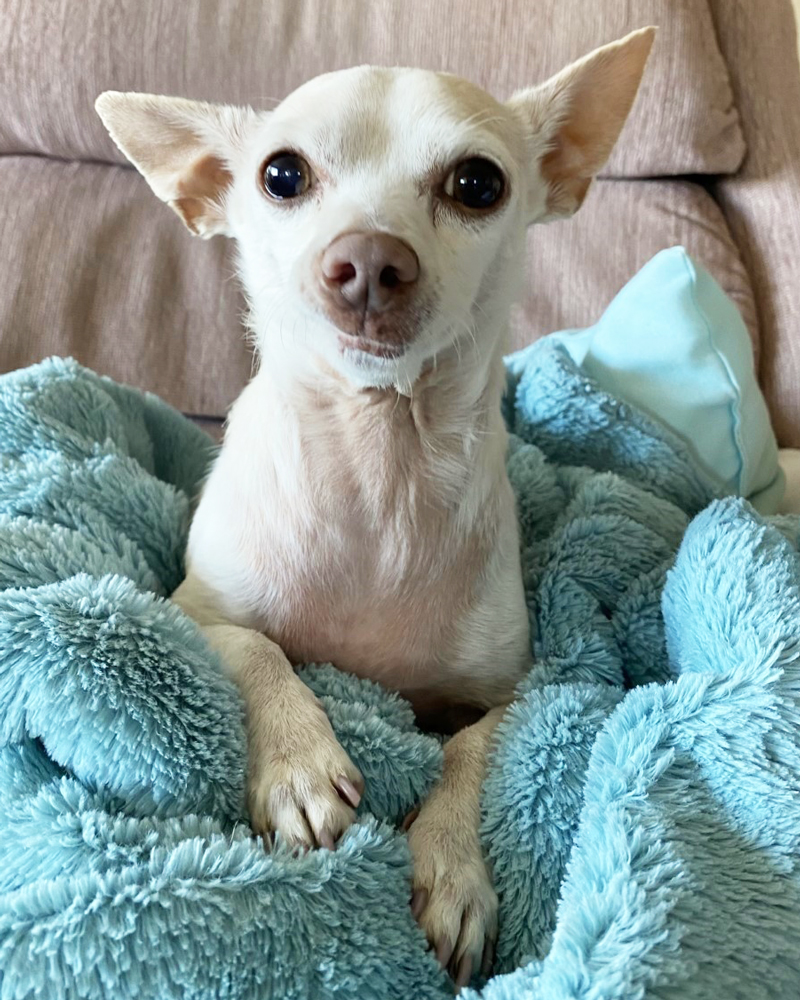
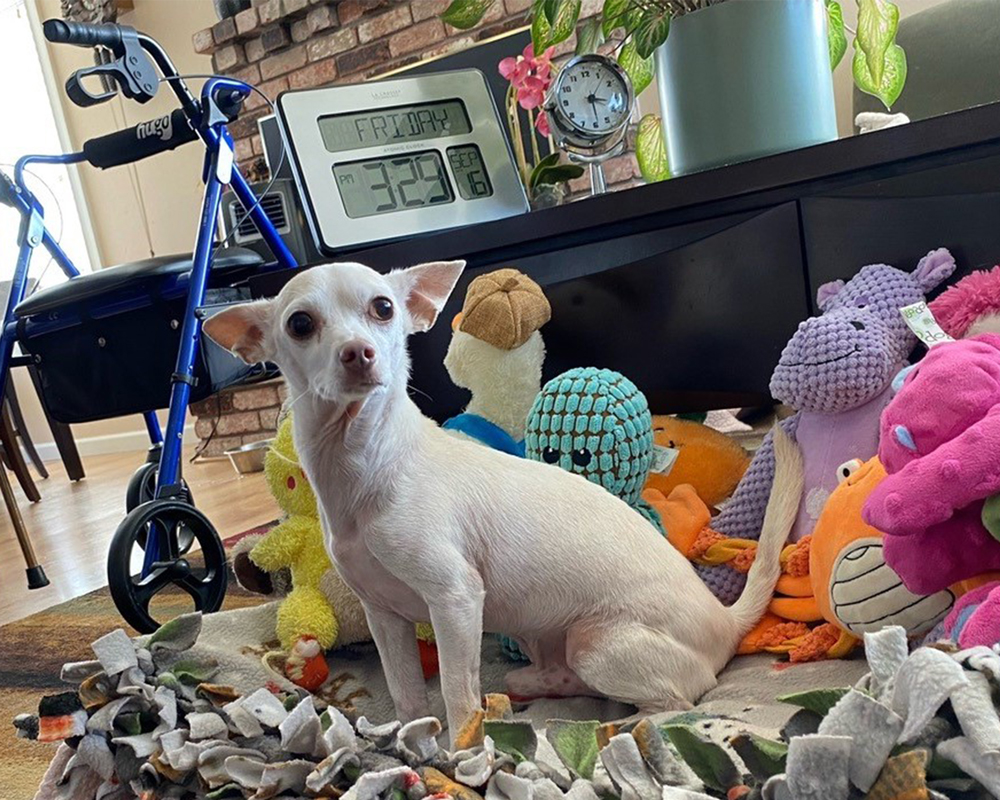
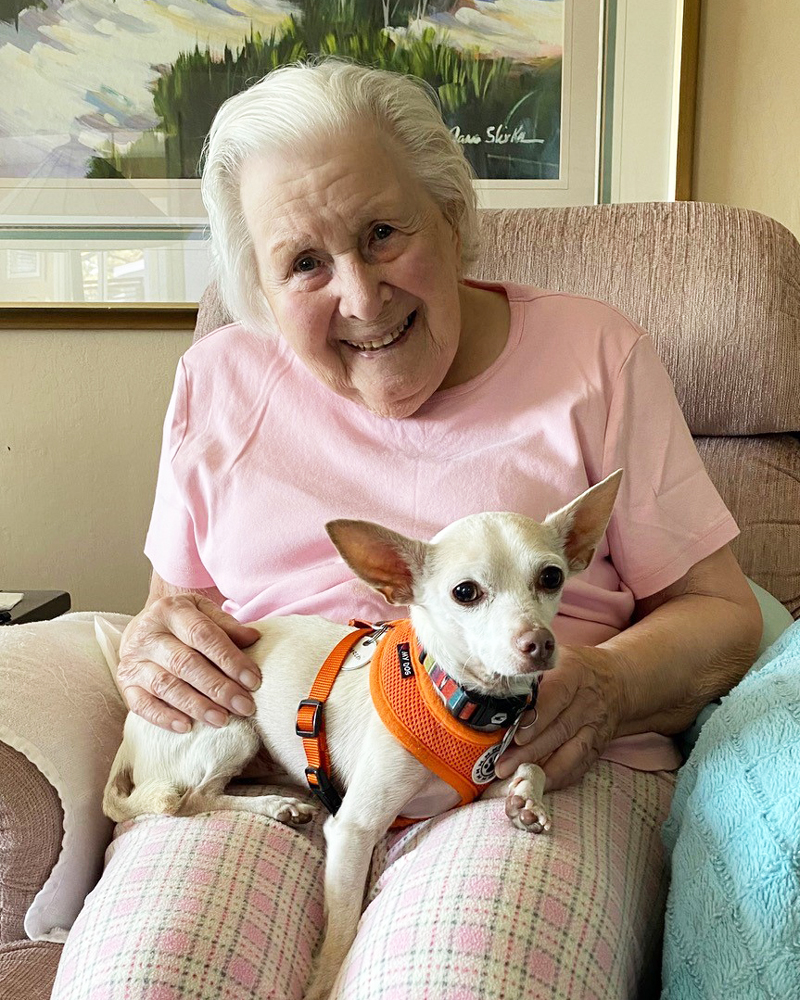
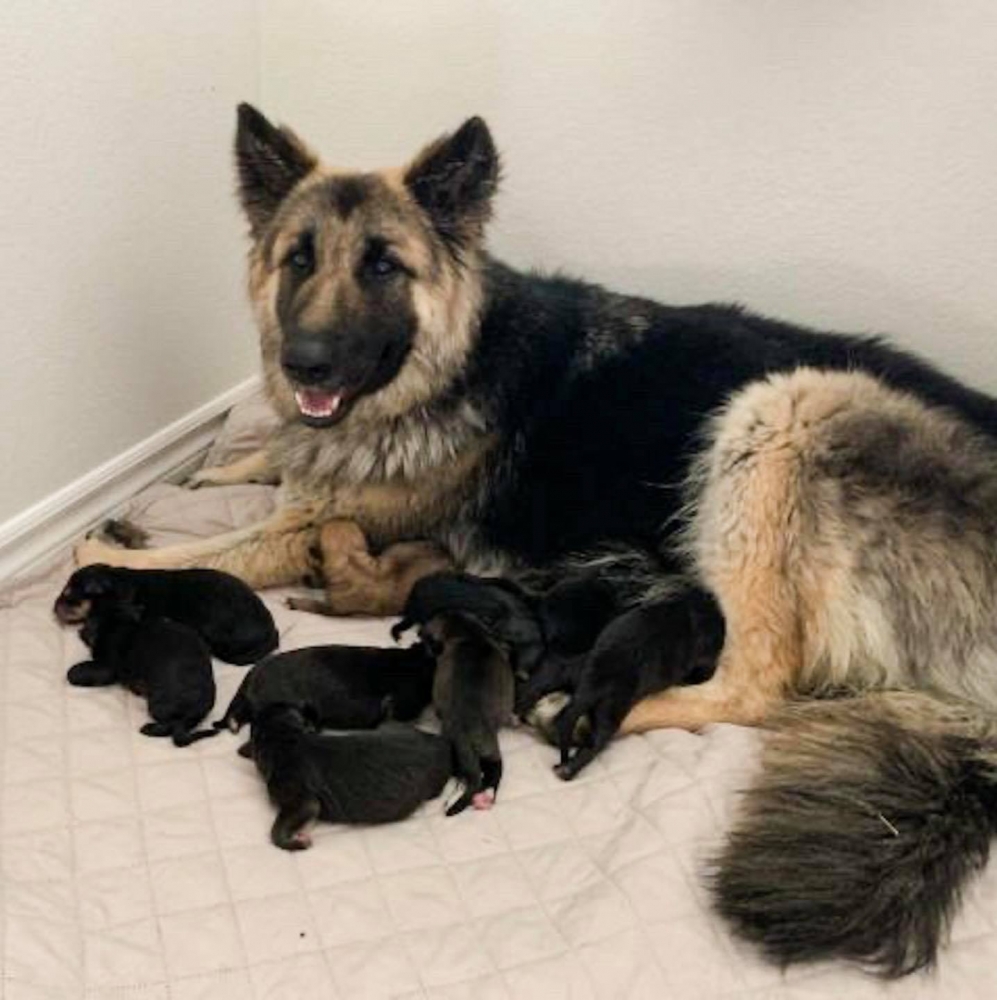
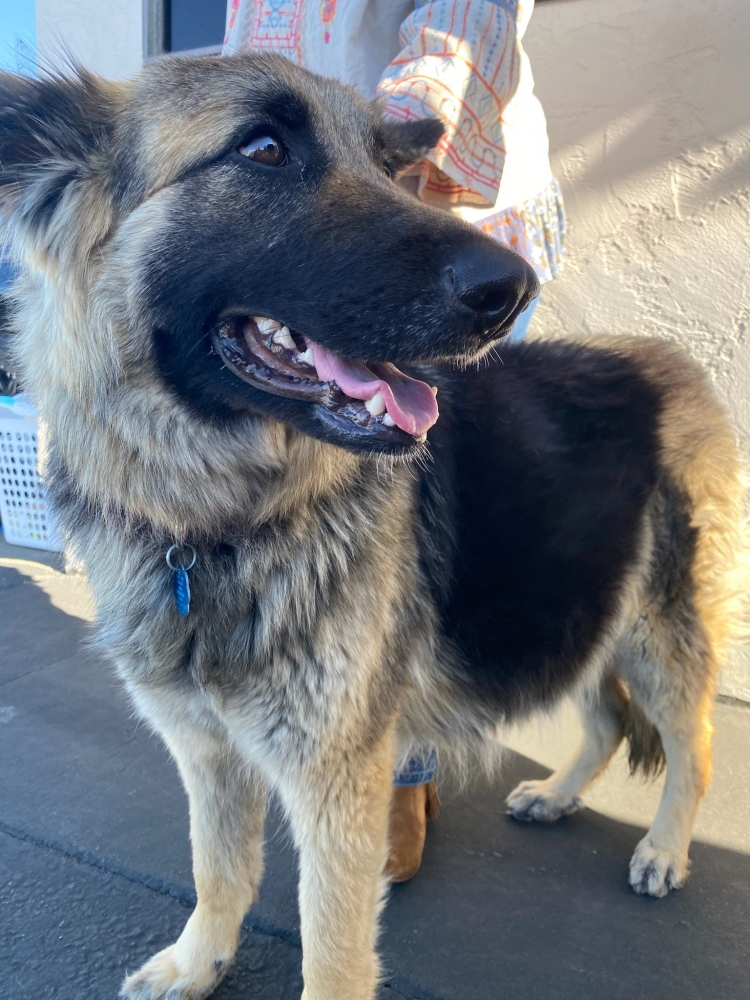
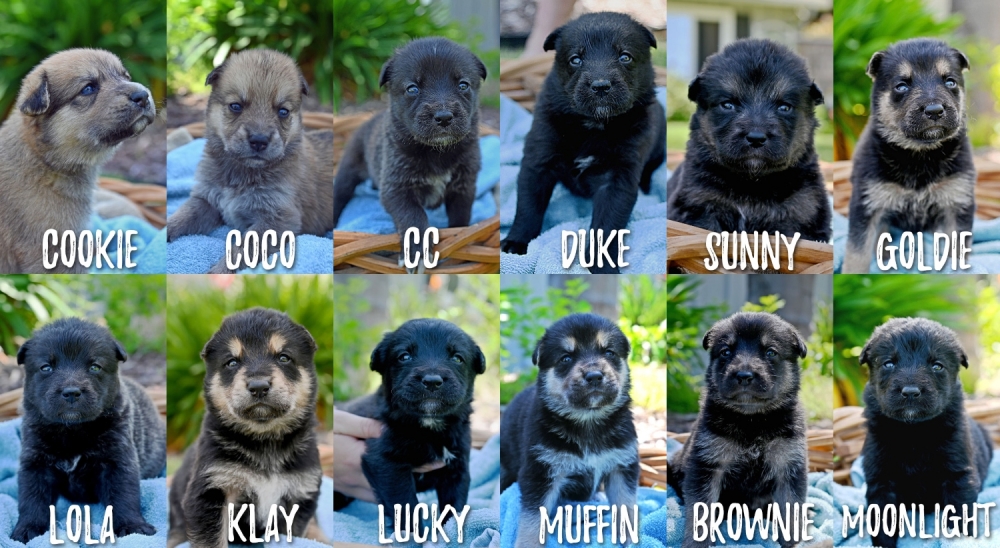
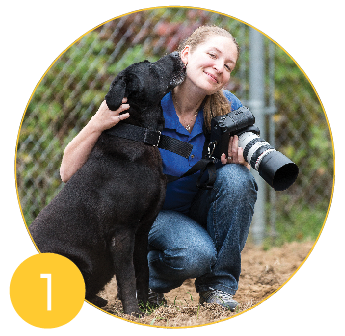
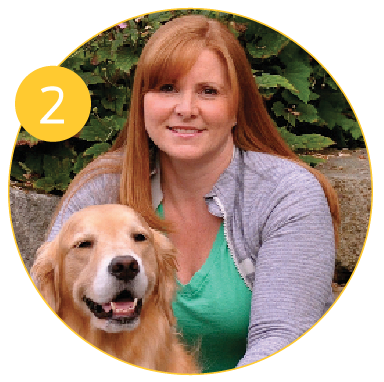

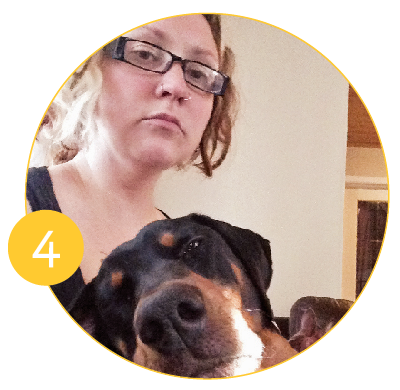
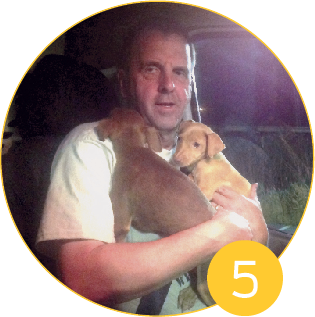
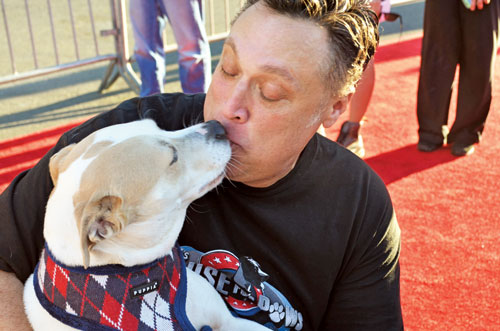
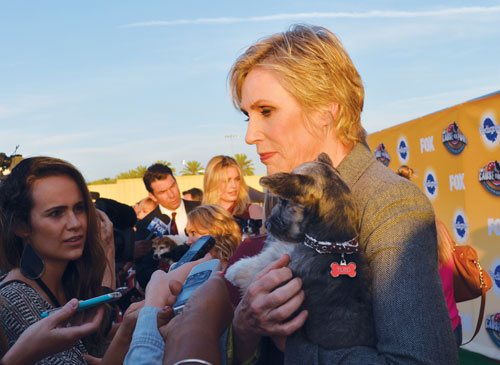

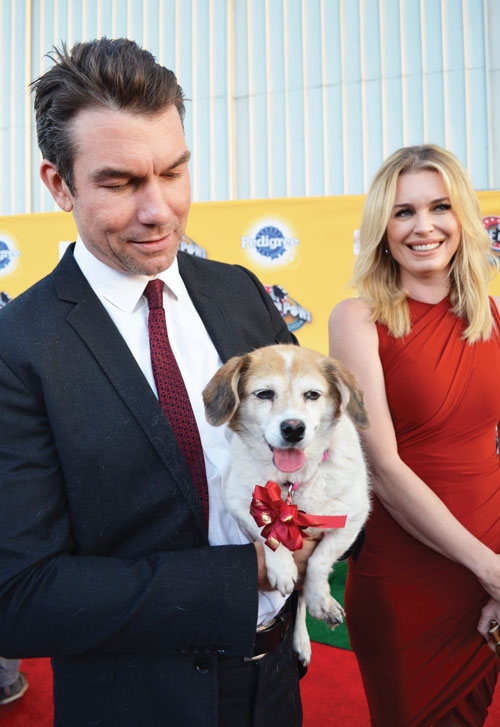


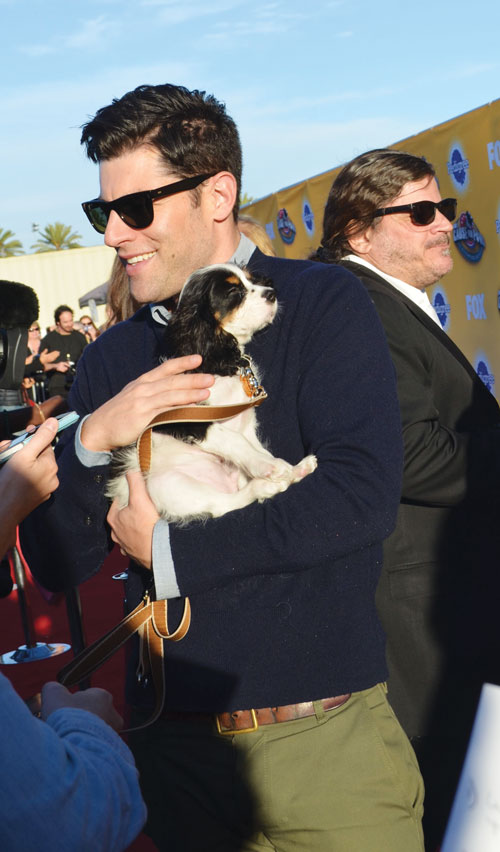
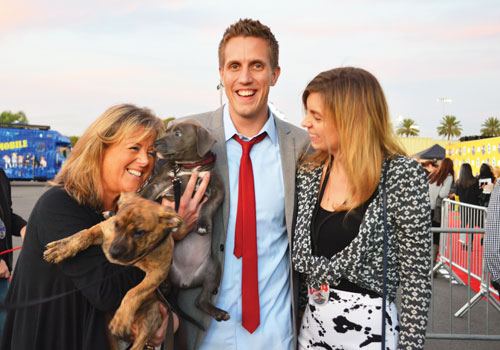
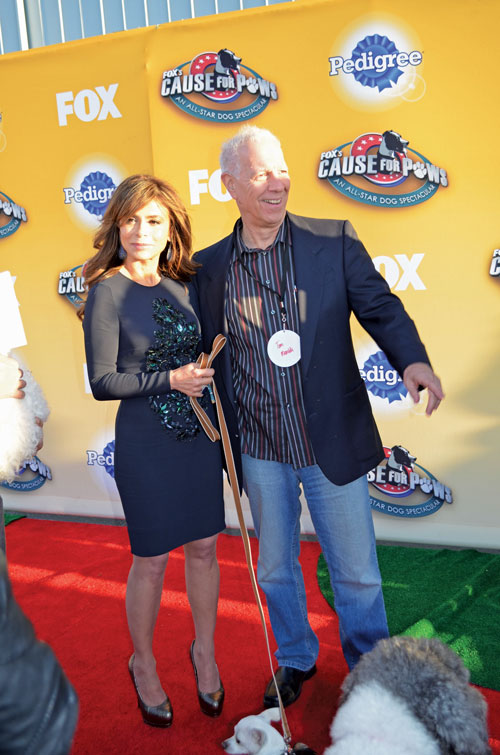

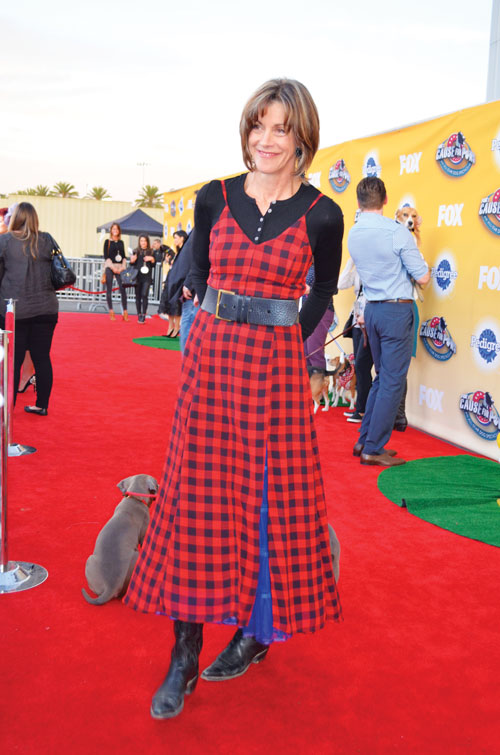
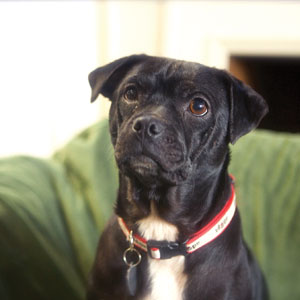 There’s no doubt that adopting dogs into permanent homes is the ultimate goal for shelters and rescue groups, but fostering is another, equally important step in the adoption process. Dog fosterers are those often unsung, frequently short-term volunteers who provide love and food and shelter and compassion—in short, a safe stop on what has been, in many cases, a tumultuous journey.
There’s no doubt that adopting dogs into permanent homes is the ultimate goal for shelters and rescue groups, but fostering is another, equally important step in the adoption process. Dog fosterers are those often unsung, frequently short-term volunteers who provide love and food and shelter and compassion—in short, a safe stop on what has been, in many cases, a tumultuous journey.
